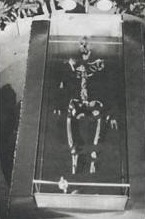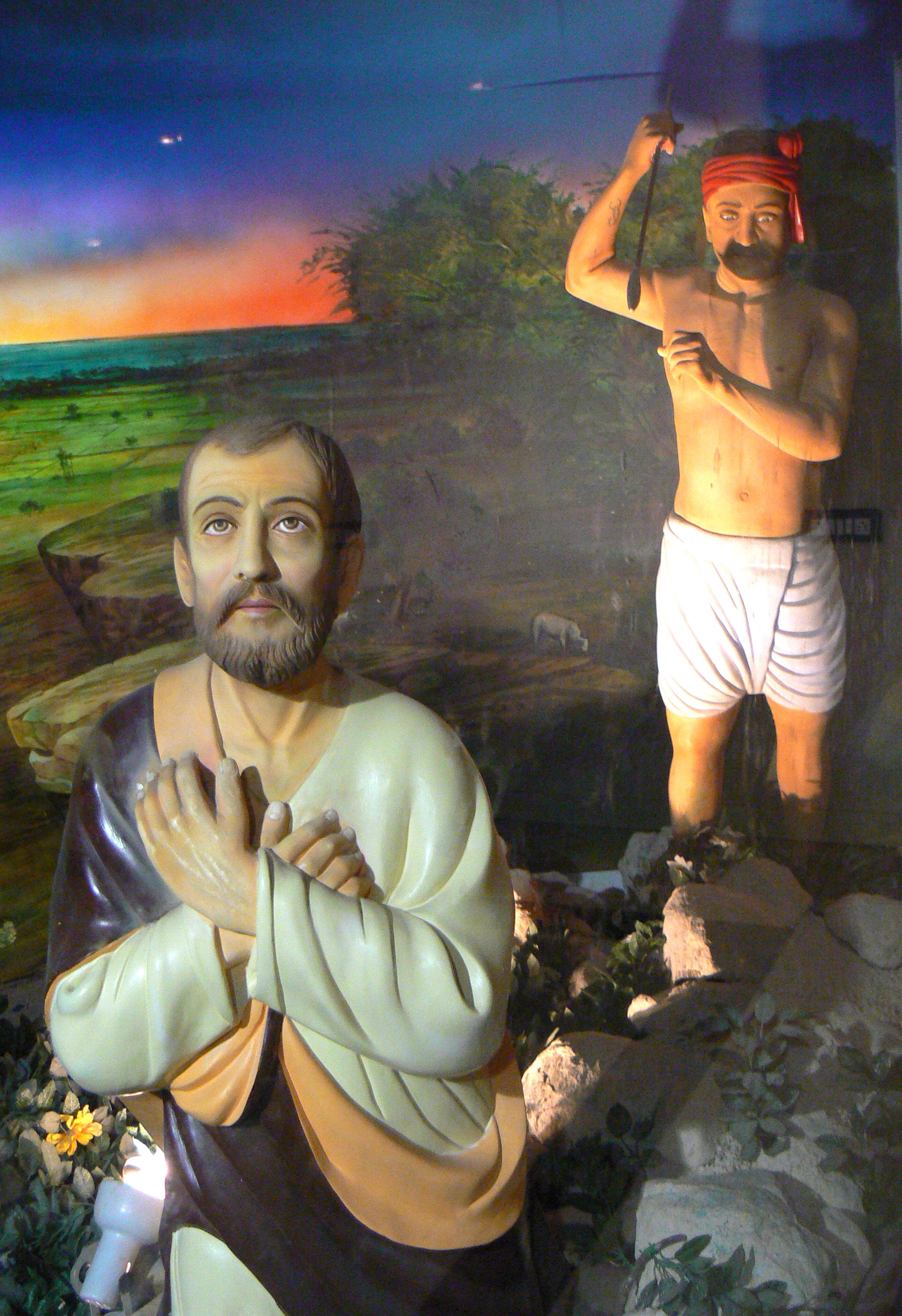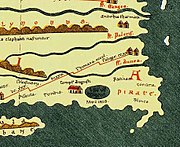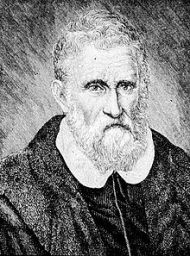“So your source is ‘common Christian tradition’? Fortunately, we are past the stage where we believe a story just because ‘tradition’ says so. Therefore, we don’t believe the blood libel against the Jewish people anymore, even though for centuries it has been supported by ‘common Christian tradition’. Likewise, we don’t believe the blood libel against the ‘priests of Kali’ either.” – Dr. Koenraad Elst
72 CE: Thomas the Apostle Is Murdered in India – David B. Green
December 21 in the year 72 C.E., is the day of the martyrdom of Thomas the apostle, according to the tradition of a number of Christian churches. Like all of the 12 apostles, or disciples, of Jesus, Thomas was a practicing Jew, and was given the mission by his mentor to spread his teachings, both among the Jews and the Gentiles.
In both the Book of John, one of the Gospels of the New Testament, and in the apocryphal Acts of Thomas, Thomas is described as “Thomas, who is called Didymus,” a redundancy, since “Thomas” comes from the Aramaic word teoma, meaning “twin” (in Hebrew, it’s te’om), for which the word in Greek is didymus.
Priests of Kali
A late tradition sees Thomas as having carried the gospel of Jesus to the Indian subcontinent, first to the north-western kingdom of Gondophorus. Then, according to the third-century Acts of Thomas, in the year 52, the apostle sailed, in the company of a Jewish traveler named Abbanes, to the southern tip of India, to the port of Muziris, present-day Pattanam, in Kerala state.
Kerala was home, even at that time, to a Jewish community. A 17th-century work called Thomma Parvam (Songs of Thomas) says that he converted 40 Jews upon his arrival, along with 3,000 Hindus of Brahmin origin.
Modern historians believe that Christianity actually arrived in India several centuries after the era of the historical Thomas, with the arrival of Christians from Syria and from Persia.
The martyrdom of Thomas, however, took place not on western coast of India, but on the other side of the subcontinent, in the south-eastern city of Mylapore, near latter-day Chennai. There, Thomas came into conflict with the Hindu priests of Kali, who killed him for insulting their deity—or simply for converting many of their followers. (Marco Polo, in the 13th century, heard that Thomas had died, more than a millennium earlier, when an archer out hunting peacocks had accidentally shot him.)
His bones were then brought into the city of Mylapore and buried inside a church he had already built there, where in the 16th century, Portuguese explorers built the San Thome Basilica, which was rebuilt by the British in 1893.
Today, December 21 is still observed as the feast day of St. Thomas in some Protestant churches, and among traditionalist Catholics. In the Roman Catholic Church, however, the feast day was moved, in 1960, to July 3, so as not to interfere with the days leading up to Christmas, on December 25. – Haaretz, 21 December 2015

REjoinder: The confabulated murder of Saint Thomas – Koenraad Elst
So your source is “common Christian tradition”? Fortunately, we are past the stage where we believe a story just because “tradition” says so. Therefore, we don’t believe the blood libel against the Jewish people anymore, even though for centuries it has been supported by “common Christian tradition”. Likewise, we don’t believe the blood libel against the “priests of Kali” either.
Nothing of this legend is proven. The only written source for it is already some 150 years older than this Thomas’s supposed martyrdom: the apocryphal Acts of Thomas. There, he is presented as coming to “India”, then a very large term (when Columbus landed in what he thought was Zipangu/Japan, he called the natives “Indians”, meaning Asians), in a part that was desert-like and where the people had Persian names. This describes Iran or western Pakistan well, but not the lush and rich tropical landscape of South India. When he has committed several crimes against society, the king asks him to leave, and only when he refuses this diplomatic solution does the king have him executed.
I first learned about the hollow, mythical nature of the Saint Thomas story while studying in Leuven Catholic University, from a Jesuit Professor of Comparative Religion, Frank de Graeve. Not exactly a “fanatical Hindu” source. More recently, Pope Benedict XIV publicly declared that St Thomas had come to Western India, and that from there, after an unspecified amount of time, Christianity (not Thomas) reached South India. I am aware that Indian Christians have raised hell against this scholarly assessment, and have pressured the Vatican into removing this statement from its website. But that is not going to alter the verdict of scholarly historiography: there is no evidence at all to support this story.
And when Christians did reach the coastal area of South India, probably as 4th-century refugees from the Persian empire that had turned hostile after the Christianization of its Roman rival, they were welcomed rather more cordially than any treatment given by Christians to Pagans. Far from being “murdered by the priests of Kali”, they were given hospitality and integrated into Hindu society, without any questions asked about the contents of their religion. Hindus have extended their hospitality more recently to Parsis, Armenians and Tibetan Buddhists; and more anciently to the Jews. That glorious record is the target of gross injustice in the fictional story of Saint Thomas.
Nota Bene
Haaretz, headquartered in Tel Aviv, is known for its left-wing and liberal stances on domestic and foreign issues. Among Israel’s daily newspapers it is considered the most influential for both its news coverage and its commentary. The English edition is published and sold together with the International New York Times.
Haaretz did not publish Dr. Elst’s rejoinder of course. Ignoring correction of facts or criticism of content is typical of Leftist newspapers around the world (re The Hindu in India). Ideology always eclipses evidence in the Leftist world. – IS


























